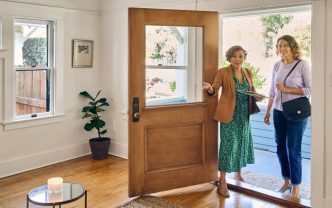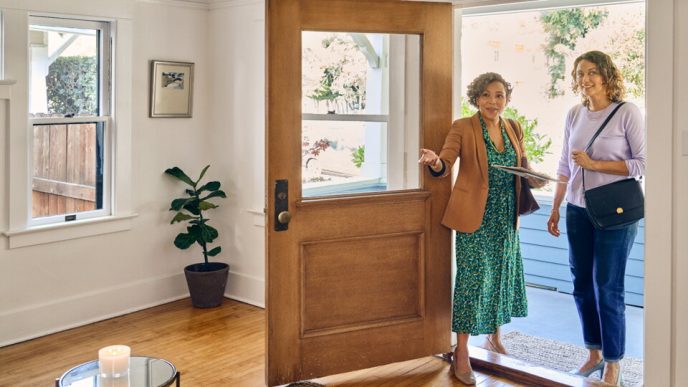Why Proximity Changes Everything
Living close to campus compresses the distance between your intentions and your actions. A five-minute walk to lectures means later alarms, unhurried mornings, and quick returns for forgotten chargers or a power nap before lab. It creates an easy rhythm: class, study, decompress, repeat—without the friction of long commutes or bus timetables. Proximity keeps you within the gravitational pull of campus life, where office hours, club meetings, pop-up events, and late-night study groups are all within reach. The result is less stress, more presence, and a stronger connection to the very resources that support your academic goals.
What Modern Student Living Really Looks Like
Modern student housing is a lifestyle product, not just a place to store your backpack. Furnished apartments simplify move-in, and high-speed internet and study rooms ease deadlines. Fitness centres that open early, silent rooms with floor outlets at every seat, secure package lockers for late delivery, and bike rooms to avoid the rain complete the experience. Controlled-access entries, well-lit walkways, and on-site supervision provide security. Shared kitchens, craft spaces, and rooftop patios link people during downtime. The nicest aspect is how it all fits together—spaces that make studying easier without losing college’s social life.
On-Campus vs. Off-Campus, Reimagined
On-campus living functions like a launchpad: you’re close to classes, supported by residence staff, and plugged into community from day one. It’s structured, convenient, and designed for academic momentum. Off-campus living leans into independence—more privacy, broader housing styles, and the freedom to shape your environment. The trade-offs differ by person. Some thrive on residence hall energy; others prefer a quieter apartment where you control the noise, the decor, and the dinner menu. The modern twist is that both options now aim for balance: community without chaos, privacy without isolation.
Off-Campus Options That Still Feel Connected
Apartments within a short walk or bike ride can feel as plugged-in as a dorm, especially in student-centric neighborhoods where class schedules shape the rhythm of the day. Co-living spaces offer private bedrooms with shared kitchens and lounges, layering affordability with community. Shared houses appeal to friend groups who want a backyard for weekend barbecues, while accessory dwelling units or studio lofts give solo dwellers a compact, independent setup. College towns from the Midwest to the Mid-Atlantic—think places like Harrisonburg—illustrate how off-campus rentals cluster near campus corridors, keeping you close to libraries, coffee shops, and transit without sacrificing that “home base” feeling.
The Social Architecture of Where You Live
Buildings curate social life in subtle ways. Lounges positioned near entrances invite spontaneous hellos; study rooms with glass walls encourage quiet productivity without isolation. Outdoor courtyards become staging grounds for movie nights, yoga, or impromptu guitar sessions. Living near campus keeps social oxygen flowing—walk past the quad and a pickup game, career fair, or club showcase is happening right now. Proximity also supports mental health by making low-effort connection possible: a short stroll for a study buddy, a few steps to a resident event, a quick detour to a mindfulness workshop before finals.
Budgeting Without the Guesswork
The smartest budget looks beyond rent to the true monthly picture. Proximity often shrinks transportation costs—less gas, fewer ride-shares, no pricey parking pass—while saving time that can be redirected to internships, tutoring, or just more sleep. Utilities, internet, and furniture can be bundled in modern student housing, reducing surprise expenses. Pay attention to add-ons like amenity fees, pet rent, parking, and application costs; these can nudge a “deal” into average territory. Per-bedroom leases in student apartments protect roommates from each other’s financial hiccups, while whole-unit leases can save money if you’re splitting costs with a reliable group.
Safety, Access, and Daily Logistics
A place feels different after dark with walkable walkways, constant illumination, and simple wayfinding. Frequent transit, marked crosswalks, and well-traveled paths make late study sessions and early labs easier in campus-adjacent neighbourhoods. Beyond class, shopping closeness, laundry availability, secure mail handling, and maintenance response times affect your daily life. Noise patterns matter too. On weekends, the stadium may be busy, but a tree-lined side street may be quieter. Good decision matches your tempo.
Lease Details Students See Most
Student housing offers by-the-bed contracts, which divide financial obligation and simplify roommate interactions. Joint leases in traditional apartments bind all tenants to the same obligations and can cut costs when split fairly. Furnished units sacrifice monthly furnishings savings for immediate liveability. Guarantor requirements are prevalent; some complexes offer deposits or income verification. If you’re considering a summer internship or study abroad, clarify utilities—what’s included, what’s capped, and how overages are billed—and subletting restrictions.
Finding Fit Without Overthinking It
The ideal place blends your academic workflow, social bandwidth, and budget reality. A quiet, study-forward student might prioritize acoustic design, library distance, and room layout for a large desk. A club leader or athlete might prize proximity to practice fields and quick routes to meeting spaces. Touring during peak campus hours reveals true commute times and sound levels. Talking with current residents offers texture: how often do maintenance requests get handled, what’s Wi-Fi like during finals, how’s the vibe in common spaces? Fit shows up in the small daily moments, and those moments add up.
FAQ
Is it better to live on campus or off?
On-campus living maximizes convenience and built-in community, while off-campus living prioritizes independence and privacy. The right choice depends on your routine, noise tolerance, and budget.
How close is considered “walkable” to campus?
Ten to fifteen minutes on foot usually feels effortless between classes, with five minutes or less delivering a genuinely seamless day. Bike lanes and frequent shuttles can expand that range.
What amenities actually matter for students?
Reliable high-speed internet, quiet study areas, secure access, and efficient maintenance make the biggest daily difference. Extras like gyms and lounges round out the experience.
Are individual (by-the-bedroom) leases worth it?
They simplify roommate risk by separating financial responsibility and often include utilities. Whole-unit leases can be cheaper when split among dependable roommates.
Can first-year students live off campus?
Policies vary by school; some require on-campus housing for freshmen. Where permitted, first-years sometimes choose off campus for family reasons, privacy, or cost.
How do I estimate the true cost of an apartment?
Add rent plus utilities, internet, parking, and any amenity or pet fees, then factor in transportation. Comparing “all-in” totals makes pricing clearer.
What should I look for in a lease?
Confirm lease term, renewal options, subletting rules, and who pays which utilities. Note fees, maintenance response expectations, and penalties for early termination.
Is furnished housing a good value?
It saves on upfront costs and move-in hassle, especially for short stays. If you already own furniture or plan to stay long term, unfurnished may cost less over time.
How important is proximity to transit and bike routes?
Transit frequency and safe bike paths dramatically improve daily flexibility. Even if you plan to walk, having options reduces stress during bad weather or tight schedules.
Do student apartments host community events?
Many do, using game nights, workshops, and study breaks to foster connection. Events can make it easier to meet neighbors and feel at home quickly.














